Know your limits
 Know the Victorian fishing regulations including fishing gear restrictions, catch limits and area closures. Don’t take more than you need and let the little ones go! Know the Victorian fishing regulations including fishing gear restrictions, catch limits and area closures. Don’t take more than you need and let the little ones go!
|
Use fish friendly Tackle
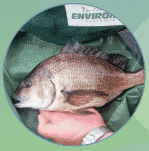 Circle hooks and knotless landing nets can reduce stress and damage to fish that are to be released Circle hooks and knotless landing nets can reduce stress and damage to fish that are to be released
|
Return unwanted or undersize fish to the water
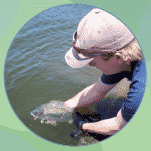 Use the right techniques to help increase released fish survival. Use the right techniques to help increase released fish survival.
|
Take rubbish with you
 Reduce the impact of litter on our waterways and aquatic environment. Reduce the impact of litter on our waterways and aquatic environment.
|
Help maintain water quality and fish habitat
 Use designated access tracks along the shoreline to try and help reduce erosion and damage to bankside vegetation. Use designated access tracks along the shoreline to try and help reduce erosion and damage to bankside vegetation.
|
When Releasing your catch
The National Recreational and Indigenous Fishing Survey undertaken in 2000 estimated that 43.9% of fish captured by recreational anglers were released. There are many reasons why anglers release their catch which include:
- when fish are legally undersize
- the bag or possession limit has been exceeded
- when anglers have caught more than they need
- when anglers are practicing catch and release only
Below are some initiatives to can adopt to voluntarily help make your fishery sustainable and reduce fishing impact of fish stocks.
Do not play a fish out to exhaustion before landing
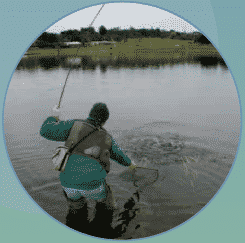 Fish that are landed quickly are usually not as tired as fish that have been played on a line for a long period. If you intend to release a fish and can land it quickly, it is likely it will be revived much more quickly and will be able to escape predators after its release. Fish that are landed quickly are usually not as tired as fish that have been played on a line for a long period. If you intend to release a fish and can land it quickly, it is likely it will be revived much more quickly and will be able to escape predators after its release.
|
Use a knotless landing net
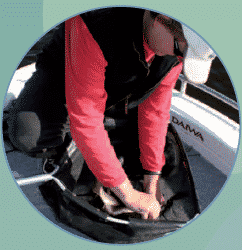 Body slime and scales are important for preventing damage to the fish’s skin, internal organs and preventing the invasion of disease. By using knotless landing nets, damage to the fishes skin and scales is reduced Body slime and scales are important for preventing damage to the fish’s skin, internal organs and preventing the invasion of disease. By using knotless landing nets, damage to the fishes skin and scales is reduced
|
Wet your hands before handling the fish and avoid touching the gills
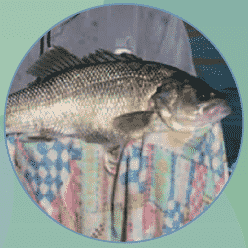 Wetting you hands or wearing wet gloves reduces the possibility of removing slime and scales from the fishes body. Using a wet towel on which to rest the fish is also a good way to settle the fish before removing the hook and can help protect you hands from spines, sharp fins and teeth! Avoid touching the gills as these are very sensitive and delicate. Wetting you hands or wearing wet gloves reduces the possibility of removing slime and scales from the fishes body. Using a wet towel on which to rest the fish is also a good way to settle the fish before removing the hook and can help protect you hands from spines, sharp fins and teeth! Avoid touching the gills as these are very sensitive and delicate.
|
Support or cradle large fish after landing and avoid holding the fish vertically
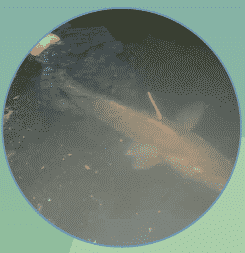 When fish are removed from the water their bodies can struggle to support their own weight. To reduce damage to the fish and their delicate internal organs, support the fish’s belly or remove the hook from the fish in the water or in the net if practical. Using a fish grip is also a good way to hold fish carefully for hook removal, but avoid holding the fish vertically as this can damage the fish’s mouth and head. When fish are removed from the water their bodies can struggle to support their own weight. To reduce damage to the fish and their delicate internal organs, support the fish’s belly or remove the hook from the fish in the water or in the net if practical. Using a fish grip is also a good way to hold fish carefully for hook removal, but avoid holding the fish vertically as this can damage the fish’s mouth and head.
|
Use long nosed pliers to quickly and carefully remove the hook
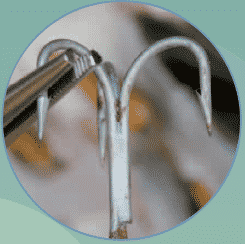 Long nosed pliers allow you to quickly and carefully remove a range of hooks. This is important as it means that the fish is out of the water for only a short period. It also makes removing treble hooks (usually used on bibbed lures) safer for the angler to manage and reduces the likelihood of further hook damage to the fish. Crimping you hook barbs with pliers also makes removing the hooks much easier and can reduce hook damage to the fish’s mouth. Long nosed pliers allow you to quickly and carefully remove a range of hooks. This is important as it means that the fish is out of the water for only a short period. It also makes removing treble hooks (usually used on bibbed lures) safer for the angler to manage and reduces the likelihood of further hook damage to the fish. Crimping you hook barbs with pliers also makes removing the hooks much easier and can reduce hook damage to the fish’s mouth.
|
Try using circle hooks or artificial lures or baits to reduce the likelihood of deep hooked (gut hooked) fish
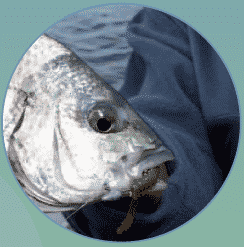 Circle hooks usually result in the fish being shallow hooked in the mouth or lip. As a result these fish can usually have the hook removed quickly and with minimal damage to the fish’s mouth. When fishing, keep a tight line between the rod tip and the hook, or fishing with a moving lure or soft plastic can also reduce deep hooking. Circle hooks usually result in the fish being shallow hooked in the mouth or lip. As a result these fish can usually have the hook removed quickly and with minimal damage to the fish’s mouth. When fishing, keep a tight line between the rod tip and the hook, or fishing with a moving lure or soft plastic can also reduce deep hooking.
|
Cut the line as close to the fish’s mouth as possible if the fish is deep hooked
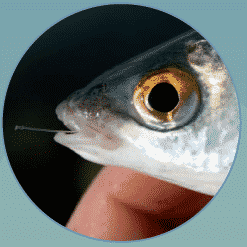 Studies on a number of fish species have shown that fish can either regurgitate hooks or dissolve them in the gut when a fish is deep hooked in the throat, gills or stomach. Hen a fish is deep hooked, simply cut the line as close to the fishes mouth as possible and release the fish. Studies on a number of fish species have shown that fish can either regurgitate hooks or dissolve them in the gut when a fish is deep hooked in the throat, gills or stomach. Hen a fish is deep hooked, simply cut the line as close to the fishes mouth as possible and release the fish.
|


 Know the Victorian fishing regulations including fishing gear restrictions, catch limits and area closures. Don’t take more than you need and let the little ones go!
Know the Victorian fishing regulations including fishing gear restrictions, catch limits and area closures. Don’t take more than you need and let the little ones go! Circle hooks and knotless landing nets can reduce stress and damage to fish that are to be released
Circle hooks and knotless landing nets can reduce stress and damage to fish that are to be released Use the right techniques to help increase released fish survival.
Use the right techniques to help increase released fish survival. Reduce the impact of litter on our waterways and aquatic environment.
Reduce the impact of litter on our waterways and aquatic environment. Use designated access tracks along the shoreline to try and help reduce erosion and damage to bankside vegetation.
Use designated access tracks along the shoreline to try and help reduce erosion and damage to bankside vegetation. Fish that are landed quickly are usually not as tired as fish that have been played on a line for a long period. If you intend to release a fish and can land it quickly, it is likely it will be revived much more quickly and will be able to escape predators after its release.
Fish that are landed quickly are usually not as tired as fish that have been played on a line for a long period. If you intend to release a fish and can land it quickly, it is likely it will be revived much more quickly and will be able to escape predators after its release. Body slime and scales are important for preventing damage to the fish’s skin, internal organs and preventing the invasion of disease. By using knotless landing nets, damage to the fishes skin and scales is reduced
Body slime and scales are important for preventing damage to the fish’s skin, internal organs and preventing the invasion of disease. By using knotless landing nets, damage to the fishes skin and scales is reduced Wetting you hands or wearing wet gloves reduces the possibility of removing slime and scales from the fishes body. Using a wet towel on which to rest the fish is also a good way to settle the fish before removing the hook and can help protect you hands from spines, sharp fins and teeth! Avoid touching the gills as these are very sensitive and delicate.
Wetting you hands or wearing wet gloves reduces the possibility of removing slime and scales from the fishes body. Using a wet towel on which to rest the fish is also a good way to settle the fish before removing the hook and can help protect you hands from spines, sharp fins and teeth! Avoid touching the gills as these are very sensitive and delicate. When fish are removed from the water their bodies can struggle to support their own weight. To reduce damage to the fish and their delicate internal organs, support the fish’s belly or remove the hook from the fish in the water or in the net if practical. Using a fish grip is also a good way to hold fish carefully for hook removal, but avoid holding the fish vertically as this can damage the fish’s mouth and head.
When fish are removed from the water their bodies can struggle to support their own weight. To reduce damage to the fish and their delicate internal organs, support the fish’s belly or remove the hook from the fish in the water or in the net if practical. Using a fish grip is also a good way to hold fish carefully for hook removal, but avoid holding the fish vertically as this can damage the fish’s mouth and head. Long nosed pliers allow you to quickly and carefully remove a range of hooks. This is important as it means that the fish is out of the water for only a short period. It also makes removing treble hooks (usually used on bibbed lures) safer for the angler to manage and reduces the likelihood of further hook damage to the fish. Crimping you hook barbs with pliers also makes removing the hooks much easier and can reduce hook damage to the fish’s mouth.
Long nosed pliers allow you to quickly and carefully remove a range of hooks. This is important as it means that the fish is out of the water for only a short period. It also makes removing treble hooks (usually used on bibbed lures) safer for the angler to manage and reduces the likelihood of further hook damage to the fish. Crimping you hook barbs with pliers also makes removing the hooks much easier and can reduce hook damage to the fish’s mouth. Circle hooks usually result in the fish being shallow hooked in the mouth or lip. As a result these fish can usually have the hook removed quickly and with minimal damage to the fish’s mouth. When fishing, keep a tight line between the rod tip and the hook, or fishing with a moving lure or soft plastic can also reduce deep hooking.
Circle hooks usually result in the fish being shallow hooked in the mouth or lip. As a result these fish can usually have the hook removed quickly and with minimal damage to the fish’s mouth. When fishing, keep a tight line between the rod tip and the hook, or fishing with a moving lure or soft plastic can also reduce deep hooking. Studies on a number of fish species have shown that fish can either regurgitate hooks or dissolve them in the gut when a fish is deep hooked in the throat, gills or stomach. Hen a fish is deep hooked, simply cut the line as close to the fishes mouth as possible and release the fish.
Studies on a number of fish species have shown that fish can either regurgitate hooks or dissolve them in the gut when a fish is deep hooked in the throat, gills or stomach. Hen a fish is deep hooked, simply cut the line as close to the fishes mouth as possible and release the fish.